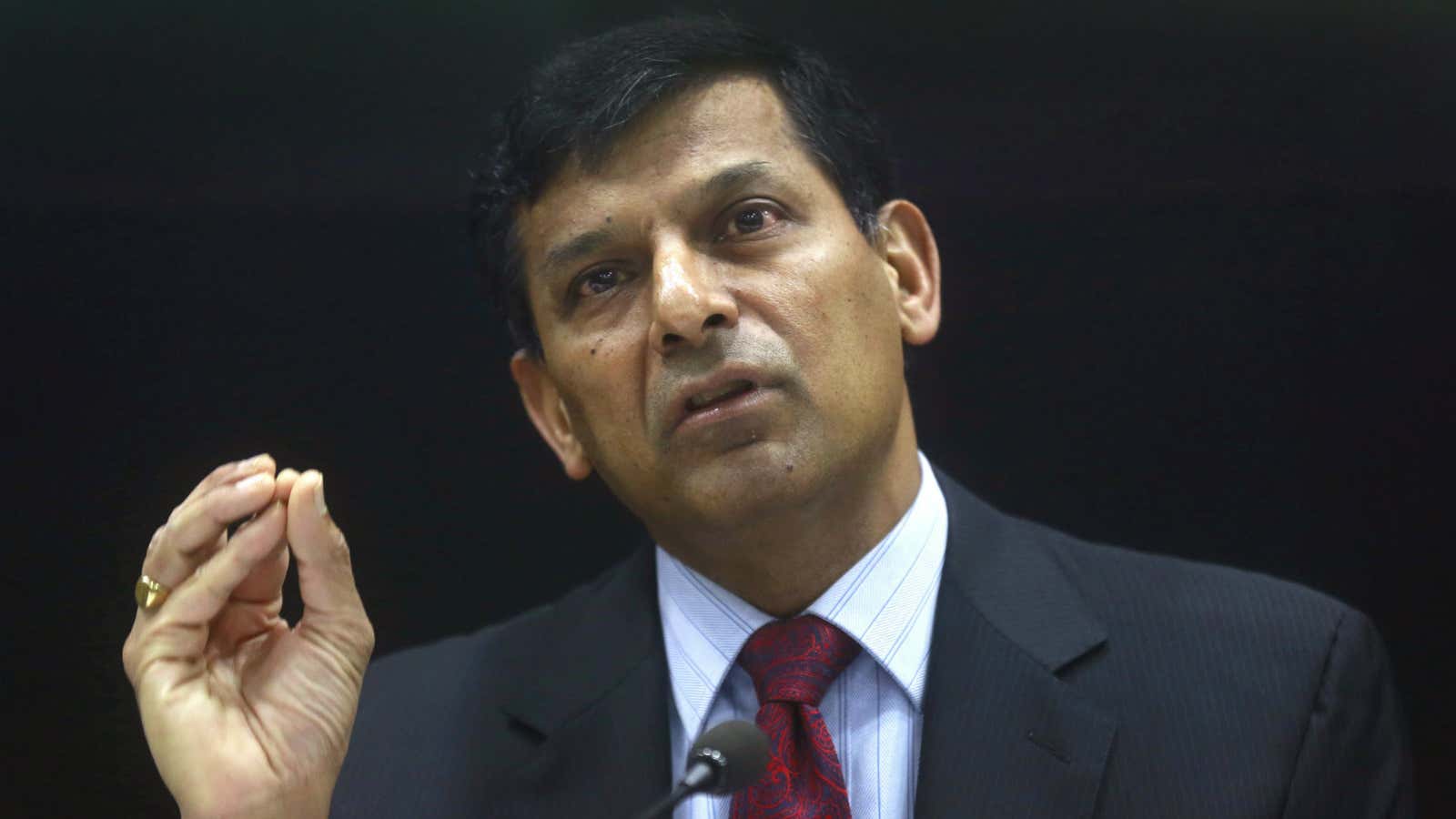Raghuram Rajan, India’s outgoing central banker, has always been vocal about how every Indian needs access to basic banking facilities.
During his tenure at the Reserve Bank of India (RBI), the 53-year-old has taken several steps to take financial services to India’s hinterlands. In Aug. 2015, Rajan issued licences for payments banks, a move said to be a “game-changer” because of the potential reach of these institutions. This was also the first time in the RBI’s history that such licences were issued. A month later, Rajan approved small finance bank licences for 10 firms, again with an aim to serve rural areas.
Still, this may not be enough. India has about 21% of the world’s unbanked population (pdf), so there’s a long way to go to get every Indian under the formal banking system.
On July 18, speaking at a seminar in Hyderabad, Rajan explained the challenges to financial inclusion in Asia’s third-largest economy. “It would be fair to say that while we have made tremendous advances since independence, we have still some way to go to ensure widespread financial inclusion,” he said during his speech.
Rajan, who will leave office in September, said that while an underdeveloped financial system is one reason that a large number of poor and those in remote areas are excluded, the profitability of servicing them is lower, too. This makes it unattractive for banks to tap these populations.
He coined an acronym for the impediments: IIT—information, incentives, and transaction costs.
Here’s what he said:
The excluded may live in remote areas or may belong to communities or segments of society that undertake economic activity informally—they do not maintain records or have signed contracts or documentation. They often do not own property or have regular established sources of income. As a result, a banker, especially if as is typical, he is not from the local region, will have difficulty getting sufficient information to offer financial products.
A second concern is incentives. For example, loans are easily available only if the lender thinks he will be repaid. When the legal system does not enforce repayment quickly or cheaply, and when the borrower does not have any collateral to pledge, the lender might believe that he will find it difficult to get repaid.
The third impediment is transactions costs. Since the size of transactions by the poor, or by micro farmers or enterprises is small, the fixed costs in transacting are relatively high. It takes as much time helping a client fill out the forms and to provide the necessary documentation if he is applying for a loan for Rs10,000 as it takes to help another one borrow Rs10,00,000. A banker who is conscious of the bottom line would naturally focus on the large client in preference to the tiny one.
Meanwhile, Rajan also said that moneylenders—often a source of funds in rural areas—are a big challenge. They sometimes even charge interest rates as high as 120%. The poor are then trapped in an endless repayment cycle.
One of the primary motivations for the country to push financial inclusion is to free the excluded from the clutches of the moneylender. How does the moneylender boldly lend where no banker dares to lend? Because he does not suffer the same impediments! Coming from the local community, the sahukar is well informed on what everyone’s sources of income and wealth are, and how much they can repay. He is quite capable of using ruthless methods to enforce repayment. Moreover, the borrower knows that if he defaults on the sahukar, he loses his lender of last resort. So the borrower has strong incentives to pay. Finally, because the sahukar lives nearby and uses minimal documentation—after all, he is not going to use the courts to force repayment—loans are easily and quickly obtained. In an emergency or if the poor need to borrow on a daily basis, there are few more readily available alternatives than the moneylender. No wonder he has so many in his clutches.
To overcome these challenges, Rajan has some possible solutions. He said that the RBI should continue to direct the banks to open 25% branches in unbanked regions and allocate a certain amount of their loans to the poor, even if it is unprofitable. Offering banks subventions or grants for lending funds to these consumers will also help.
“Because there are positive social benefits to financial inclusion that are not captured by the service provider, such mandates are reasonable from a societal perspective,” he added.
Another option, according to Rajan, is to focus more on services that’ll make saving easy. Until now the main focus of financial inclusion has been to expand credit, he explained.
“We have been trying for decades to expand credit. We have focused much less on easing payments and remittances, on expanding remunerative savings vehicles, or on providing easy-to-obtain insurance against crop failures….Not only does the savings habit, once inculcated, allow the customer to handle the burden of repayment better, it may also lead to better credit allocation,” Rajan said.
